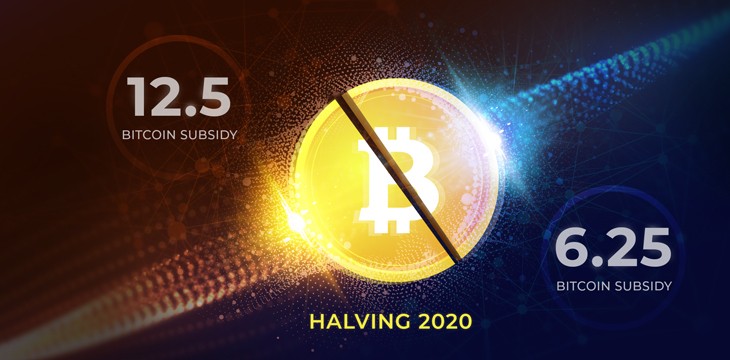Key Takeaways
- Bitcoin halving cuts mining rewards by half every four years, limiting new BTC supply.
- It’s designed to control inflation and maintain scarcity, similar to digital gold.
- The 2024 halving is expected to influence market trends through 2025–2026.
A Core Mechanism Behind Bitcoin’s Value
Every four years, a quiet yet monumental event reshapes the Bitcoin ecosystem — it’s called the Bitcoin halving. This built-in process reduces the number of new bitcoins entering circulation, reinforcing the cryptocurrency’s scarcity and influencing market dynamics for years to come.
In essence, Bitcoin halving is an automated monetary policy, coded into the network’s DNA by its mysterious creator, Satoshi Nakamoto. It ensures that over time, the supply of Bitcoin becomes increasingly limited — mimicking the scarcity of precious metals like gold.
How Bitcoin Halving Works
Bitcoin operates on a proof-of-work system, where miners validate transactions and secure the network using computational power. For their work, they’re rewarded with new bitcoins — but that reward isn’t constant.
Every 210,000 blocks, or roughly every four years, the reward miners receive for adding a new block to the blockchain is cut in half.
- In 2009, miners earned 50 BTC per block.
- After the first halving in 2012, that reward dropped to 25 BTC.
- In 2016, it became 12.5 BTC.
- By 2020, it fell to 6.25 BTC.
- After the April 2024 halving, miners now earn 3.125 BTC per block.
This gradual reduction will continue until all 21 million bitcoins have been mined — expected around the year 2140.
Why Bitcoin Halving Matters
Halving events are crucial economic moments for the Bitcoin network and broader crypto market. By reducing the rate of new supply, each halving increases Bitcoin’s scarcity — often triggering heightened demand and speculation.
Historically, halvings have preceded some of Bitcoin’s most significant bull markets. Following the 2012, 2016, and 2020 halvings, prices surged dramatically in the months that followed, although past performance doesn’t guarantee future results.
Still, the mechanism reinforces Bitcoin’s reputation as a deflationary digital asset — one that resists inflation and centralized control.
The 2024 Halving and What It Means for 2025–2026
The most recent Bitcoin halving in April 2024 arrived amid a maturing market and growing institutional involvement. Unlike earlier cycles, the 2024 event occurred during a period of regulatory progress and macroeconomic uncertainty, giving it unique implications.
As of late 2025, analysts and investors are watching whether the post-halving supply squeeze will once again spark a price rally into 2026. Many believe this cycle will be defined less by speculation and more by real-world adoption, ETF inflows, and global financial integration.
Meanwhile, miners are adapting. Lower rewards mean reduced profit margins, pushing many mining firms toward efficiency upgrades, renewable energy sources, and strategic mergers. The industry is consolidating — a sign of Bitcoin’s growing industrial scale.
Bitcoin’s Built-In Scarcity: The Digital Gold Narrative
At its core, Bitcoin halving serves one purpose: to preserve scarcity. Just as gold becomes harder to mine over time, Bitcoin becomes harder to “produce.” This fixed-supply model — only 21 million coins will ever exist — is what gives Bitcoin its “digital gold” status.
In a world where governments can print fiat currency at will, Bitcoin’s predictable and transparent supply schedule appeals to those seeking a hedge against inflation and economic instability. Each halving reinforces that narrative by mathematically limiting inflation within the Bitcoin network itself.
Potential Market Impacts
The impact of halving extends beyond Bitcoin’s price. It influences the entire crypto ecosystem:
- Altcoins often experience capital inflows after Bitcoin rallies, leading to secondary bull markets.
- Mining hardware demand typically spikes as operators seek efficiency to offset lower rewards.
- Institutional interest tends to rise as halving cycles highlight Bitcoin’s scarcity-driven value model.
However, it also brings volatility. Reduced mining profitability can force weaker miners out, temporarily lowering network hash rate until equilibrium returns.
Looking Ahead: Bitcoin’s Future After Multiple Halvings
By 2032, the Bitcoin block reward will have dropped below 1 BTC. As block rewards shrink, transaction fees will become the primary incentive for miners to maintain network security.
For now, halving remains one of Bitcoin’s most powerful economic forces — a reminder that its supply is fixed, predictable, and deflationary in a world of uncertain monetary policy.
In 2025 and beyond, Bitcoin’s scarcity mechanism may continue to attract both individual and institutional investors looking for a store of value in an increasingly digital economy.
Conclusion: Halving as the Heartbeat of Bitcoin
The Bitcoin halving is more than a technical event — it’s the heartbeat of the world’s first decentralized currency. By enforcing scarcity, it keeps Bitcoin’s economy self-regulating, decentralized, and resistant to inflationary pressures.
Each halving writes a new chapter in Bitcoin’s story — one of resilience, innovation, and long-term value creation. As we move through the 2025–2026 cycle, halving remains the silent force driving Bitcoin’s evolution, ensuring that its promise of digital scarcity endures for generations.




